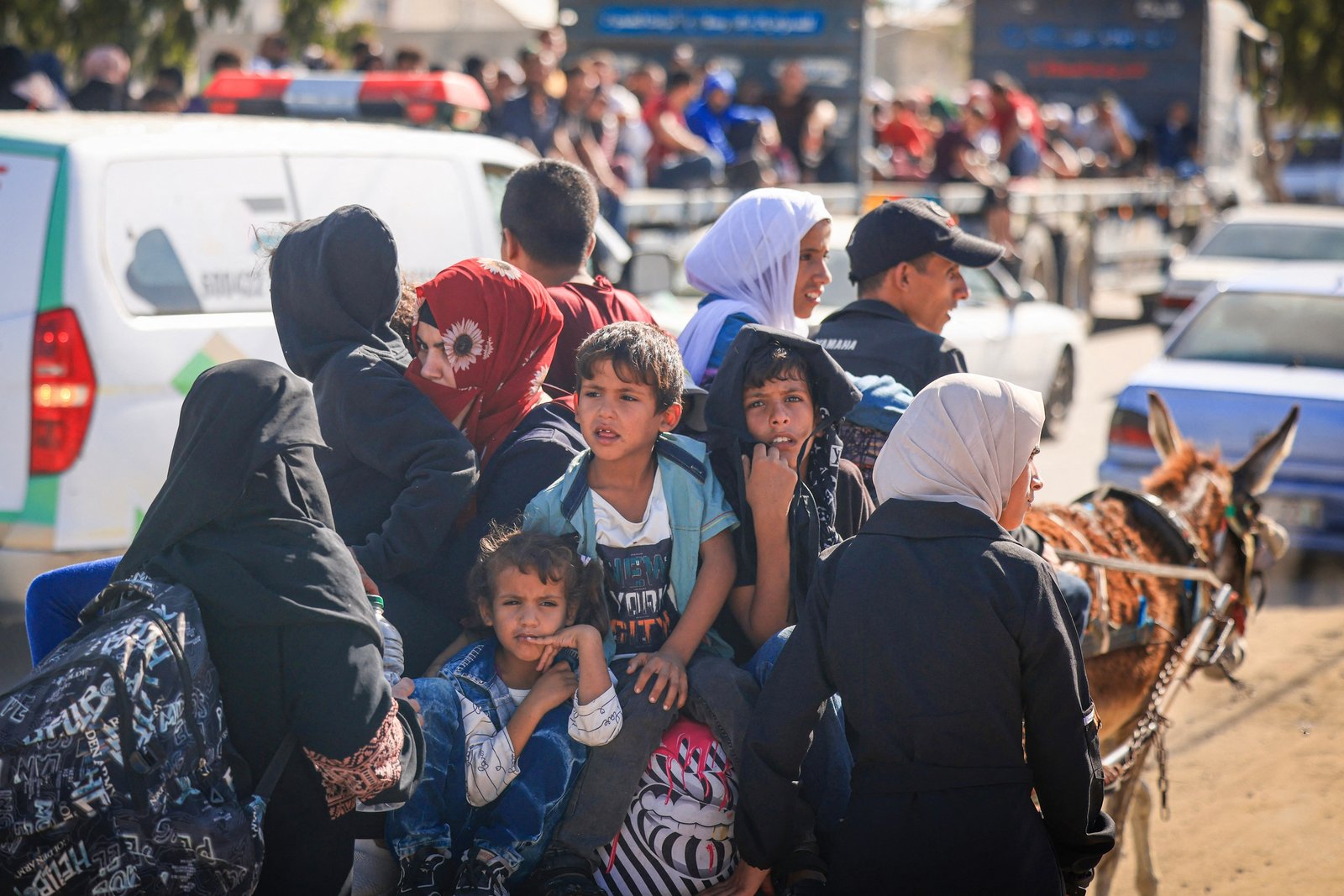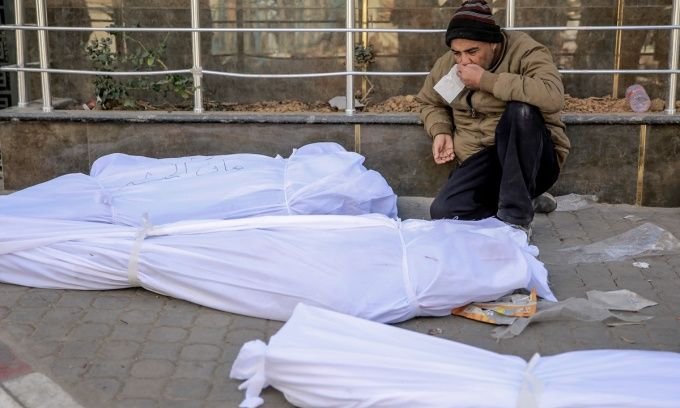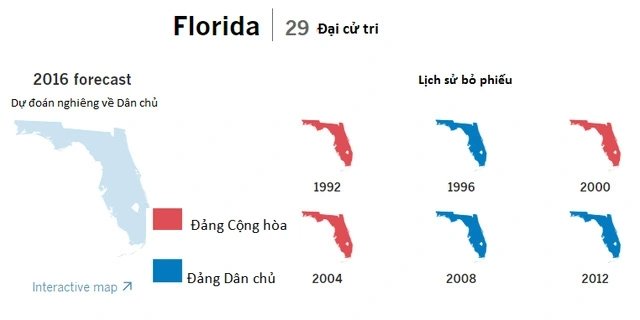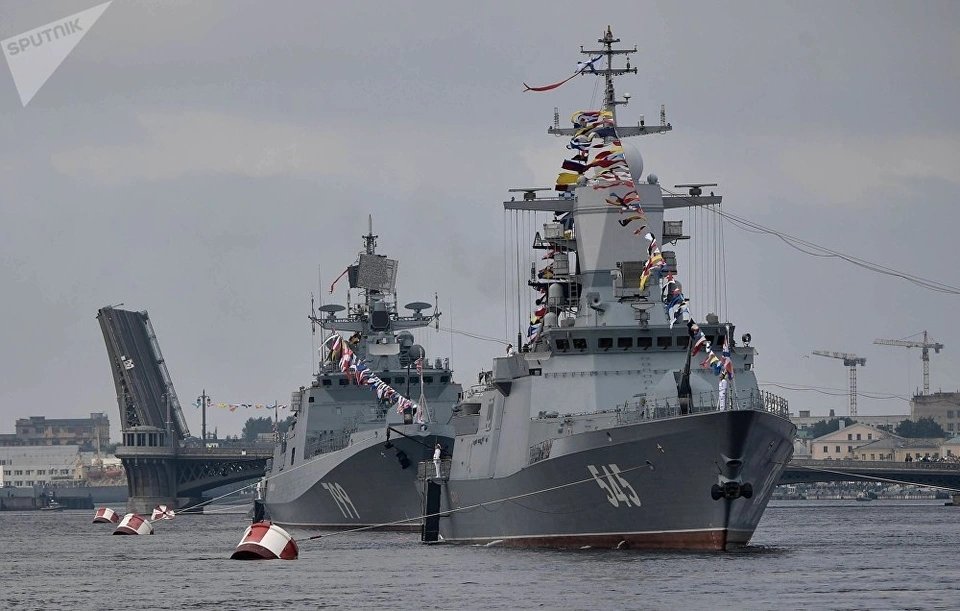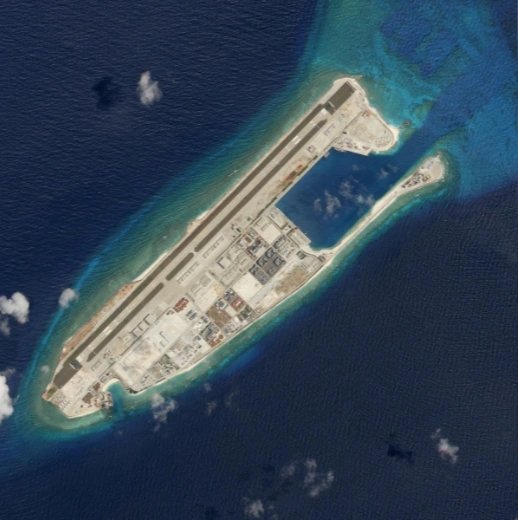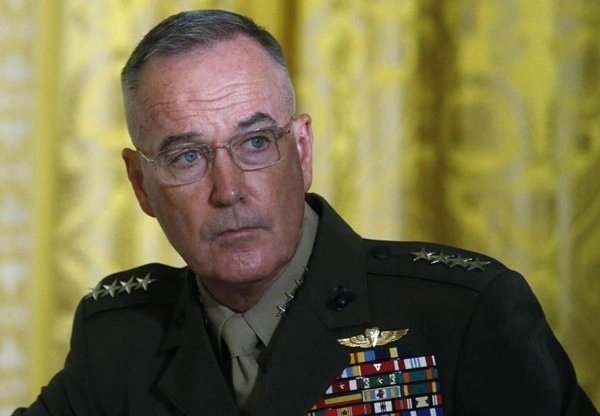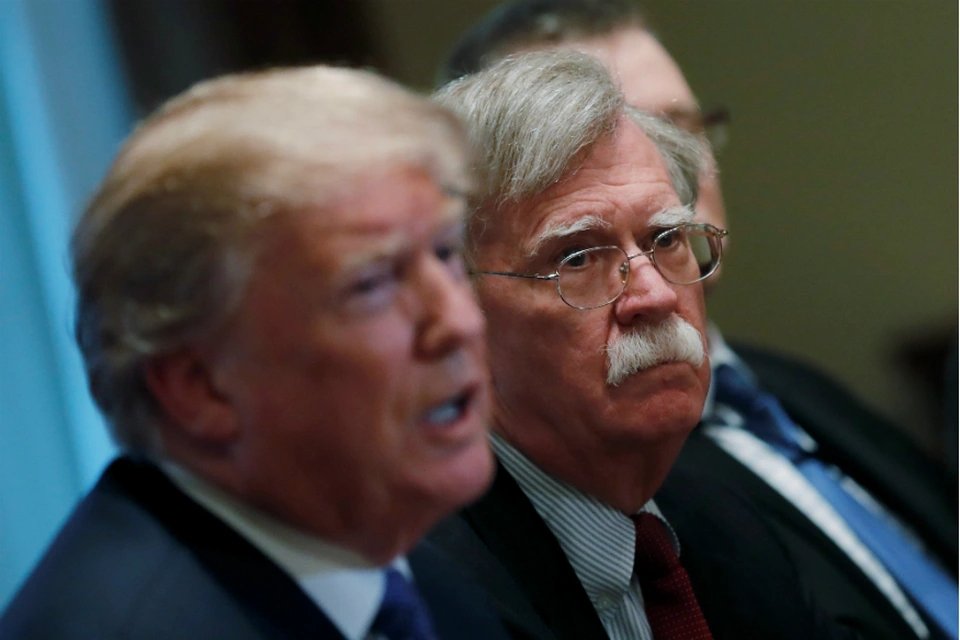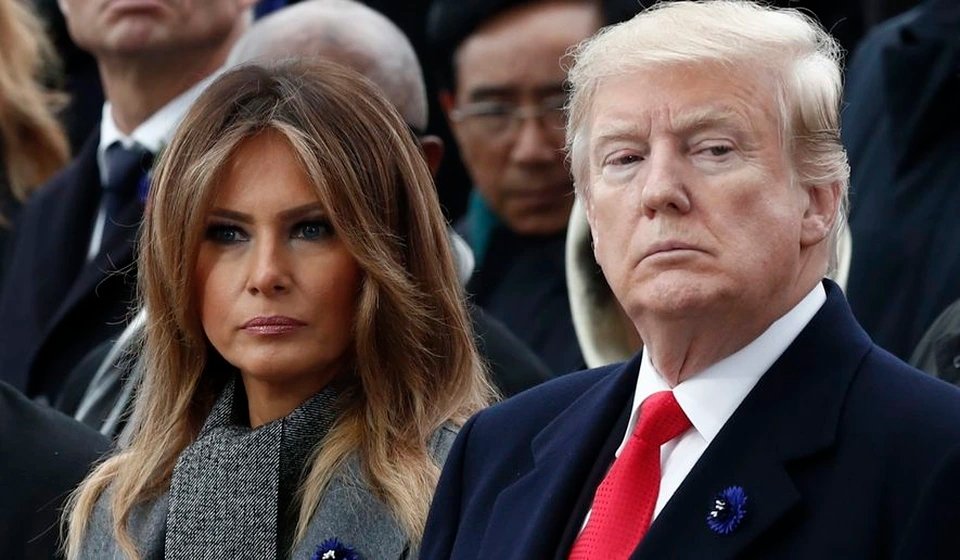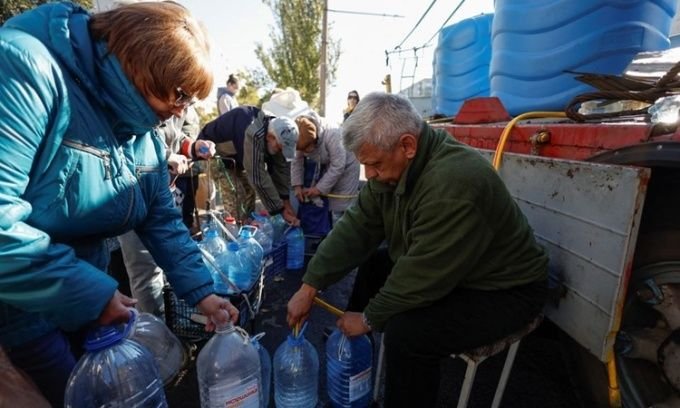
Sveta has no doubts about why the southern Ukrainian city of Mykolaiv, a shipbuilding center home to half a million people, has been without fresh water for months.
`Russia is trying to suffocate us,` Sveta sighed in frustration while waiting in line to receive water delivered on a tram repair vehicle in the city center.
People in Mykolaiv lined up to get clean water on October 16.
This dehydration situation is bitter confirmation for Sveta and about 220,000 other residents still living in Mykolaiv that the conflict with Russia is moving beyond the battlefield, spreading to civilian infrastructure.
The Kremlin has continuously attacked Ukraine’s energy facilities and clean water infrastructure in the past two weeks with missiles and drones.
But Mykolaiv’s water problems have existed for much longer than that.
Every day, Mykolaiv residents still have to bring plastic containers to the city’s water distribution points, located at the confluence of the Dnieper and Boh rivers.
`This is how we live,` lamented Mr. Yaroslav, 78, a retired worker at the Chernomorsk shipyard, as he lined up behind Sveta.

Location of the city of Myjkolaiv in southern Ukraine.
Peter Gleick, a senior fellow at the Pacific Institute, a California think tank that tracks the impact of conflicts on water resources around the world, said Russia has turned water into a `weapon` from
`Russia has long targeted Ukraine’s water infrastructure, from dams to water and wastewater treatment systems,` Gleick noted, adding that in just the first three months of the conflict, he and
Russia has admitted to targeting Ukrainian power plants, while still claiming that it will do its best not to affect people’s lives.
According to data from the Pacific Institute, Ukraine also sometimes uses water resources as a `weapon` against Russia.
Kiev is not required to maintain water supplies to the Crimean peninsula, but it can say `this is the humanitarian thing to do,` Gleick said.
The Ukrainian military released water from a dam on the Dnieper River to slow the Russian advance on the capital Kiev in February.

The woman returned home after getting two bottles of clean water delivered by a tanker in Mykolaiv on October 16.
Still, according to Dydenko, the water crisis in Mykolaiv is the worst.
`Problems elsewhere are local and can be resolved,` he said.
After nearly a month without water, Mykolaiv officials were forced to pump untreated salt water from the Boh River estuary into the city to clear sewers and allow people to flush toilets or do laundry.
Ultimately, Dydenko said the city’s entire water system will have to be replaced at a huge cost that Mykolaiv cannot currently meet when all revenue sources are rapidly decreasing.
`This is a disaster,` he said, accusing Russia of refusing to request a ceasefire to allow for inspection of freshwater intakes and repairs.
Bottled water is still available in stores, but many people have become too poor because of the conflict to buy it.
`This is the fifth leak in three days,` said Vitalii Tymoshchuk, 45, head of the repair team, standing next to a large hole his team dug to mend a broken pipe on the outskirts of Mykolaiv.
Tymoshchuk said he has no choice but to continue patching the leaking pipes, because salt water cannot be treated.
`Our mission now is to preserve all of these and maintain them through the winter,` he said.

